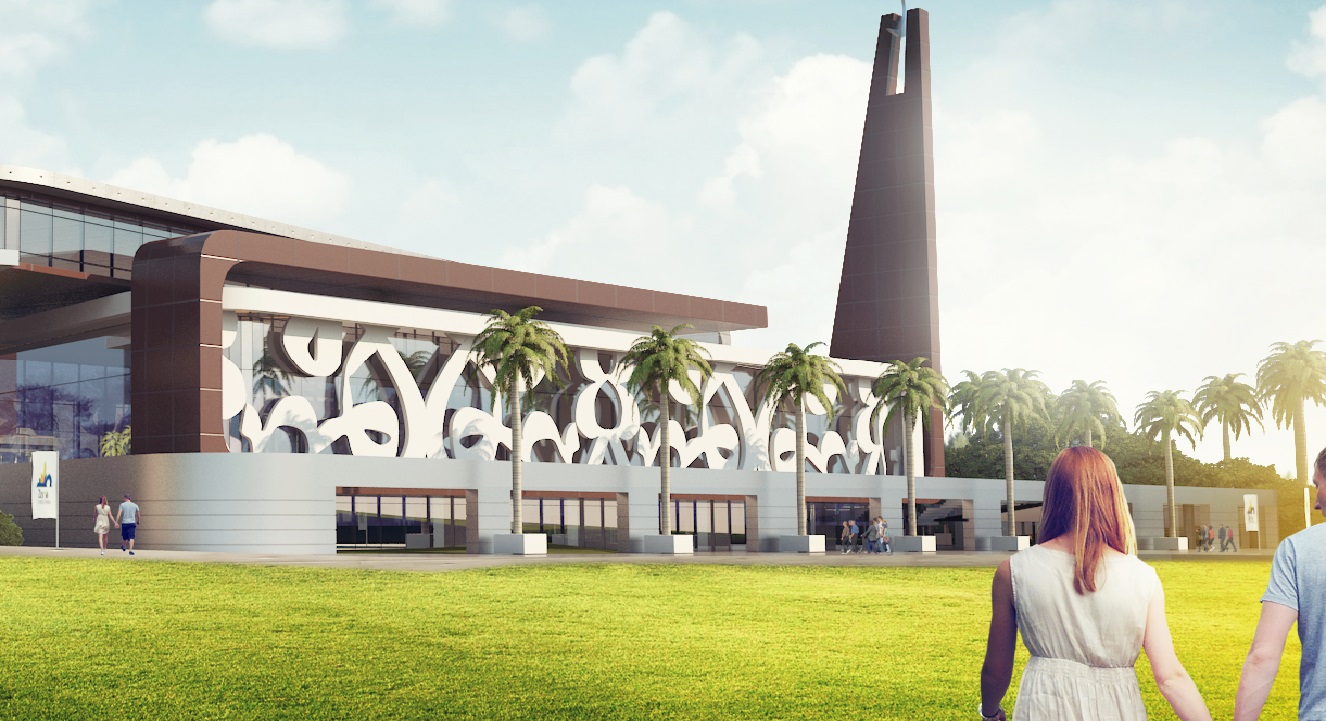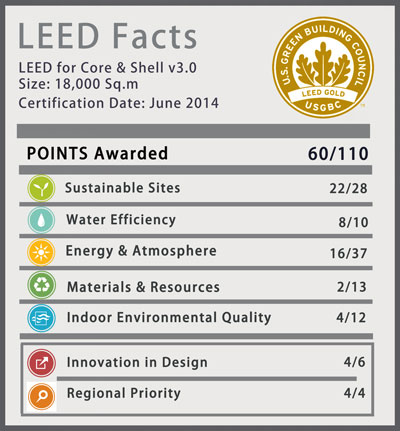
Sustainable Strategies
- High-performance, reflective roofing system reduces the Urban Heat Island Effect
- Bicycle racks & showers were installed to promote alternate transportation and reduce impacts from automobile use
- Low VOC-emitting materials for the building’s interior creates enhanced indoor air quality
- Zero CFC-based refrigerants in HVAC base building systems reduce degradation of the ozone layer
- Building materials with high-recycled content were sourced from local vendors
- High-efficiency glass greatly improves the energy performance of the building
- Low water use vegetation throughout the project saves valuable water resources
- High efficiency chilled water central plant improves the energy performance of the building
- Three bus lines are within 1/4 mile of the project
- Low-flow fixtures significantly reduce domestic water use
- Rain water harvesting reduce domestic and irrigation water use
- High-efficiency irrigation systems capture gray water to eliminate the need for potable water for irrigation
- Solar heated water system reduces energy costs for water heating
- Energy efficient lighting reduce energy consumption
- Increased ventilation rates provide superior indoor air quality
- The project maximizes alternative transportation through proximity to mass transit and support for carpooling, bike riding and the use of high efficency vehicles
